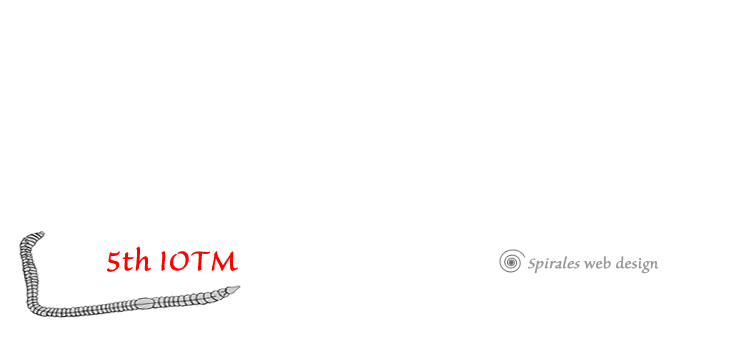Invitation to participate in the 5th International Oligochaete Taxonomy Meeting

Photo: www.beatenbergbilder.ch
For its 5th edition, the IOTM goes to Beatenberg in Switzerland! Located high above Lake Thun, at an altitude of 1200 metres, just about 10 kilometres by road away from Interlaken, this sun terrace offers a unique panorama of the Alpine peaks of the Bernese Oberland including the famous three ones, Eiger, Mönch and Jungfrau.

Oligochaeta (few-bristled worms) is an extremely important taxonomic group in aquatic and terrestrial ecosystems. The class Oligochaeta (phylum Annelida) was traditionally separated into Microdriles (small oligochaetes living in sea and fresh water and in wet soil) and Megadriles (often large oligochaetes, living mostly in terrestrial soil, a few are however semi-aquatic or aquatic). Though, one should keep in mind that nowadays Microdriles are considered as a paraphyletic assemblage whereas Megadriles are regarded as perhaps a monophyletic group.
To the layman the best known oligochaete group are earthworms that were one of the first animal group colonizing humus soils at the end of Palaeozoic (250 MYA), and Charles Darwin undeniably contributed to their fame with his famous book The Formation of Vegetable Mould through the Action of Worms with Observations on their Habits, which became a best-seller in that time. In contrast to other Oligochaeta, the important role of earthworms has been recognized from the dawn of human history till present. They were known, for millennia, as important factors of soil fertility and it is no coincidence that in 350 B.C.E. Aristotle in his Historia Animalium described them as 'earth's guts'. In fact, the number of casts was used as an estimator of soil fertility by tribesmen in the Sahara region as reported by Howard (1945). Earthworms have been also used in early medicine, as documented by Pliny the Elder (77) in his Natural History. Rather surprisingly, they have also been used as a model of scientific explanation of our world. For instance, Aristotle mentioned them as an example to support his - today rejected - theory of abiogenesis and believed — wrongly — that eels originated from earthworms.
In spite of the importance of oligochaetes, there are presently some serious deficiencies in the knowledge about their taxonomy, distribution, biology and ecology, in comparison with mammals, birds, lizards and other organismal groups. One way to bridge this gap is to bring together scientists working on the subject with the aim to speed up information about the progress in their work, exchange ideas and encourage them to cooperate. This is the basic idea behind the organization of the International Oligochaeta Taxonomy Meetings (IOTM). So far, four successful meetings took place. Traditionally, the meetings concentrate mainly on Oligochaete taxonomy and phylogeny, but also discuss different aspects from other scientific fields, e.g. earthworm ecology, faunistics and phylogeography as well as new methods of their study. The 5th International Oligochaete Taxonomy Meeting will continue in the best tradition of the previous four meetings and will take place in Beatenberg in Switzerland, from April 11th to April 15th, 2011.
We wish all participants of the 5th IOTM an informative and fruitful stay in lovely Switzerland.
Dr Tomáš Pavlíček
Convenor of the 5th IOTM












